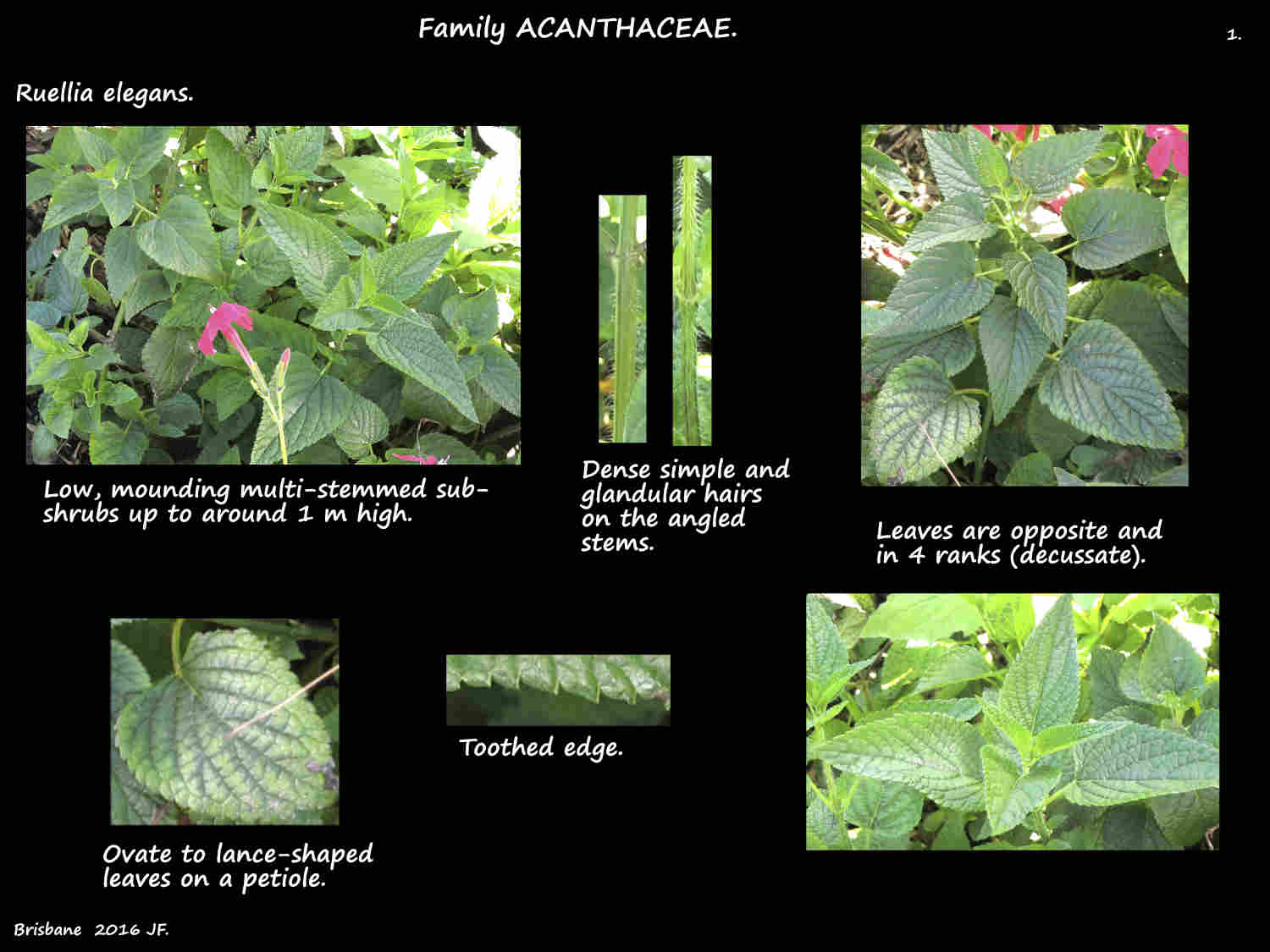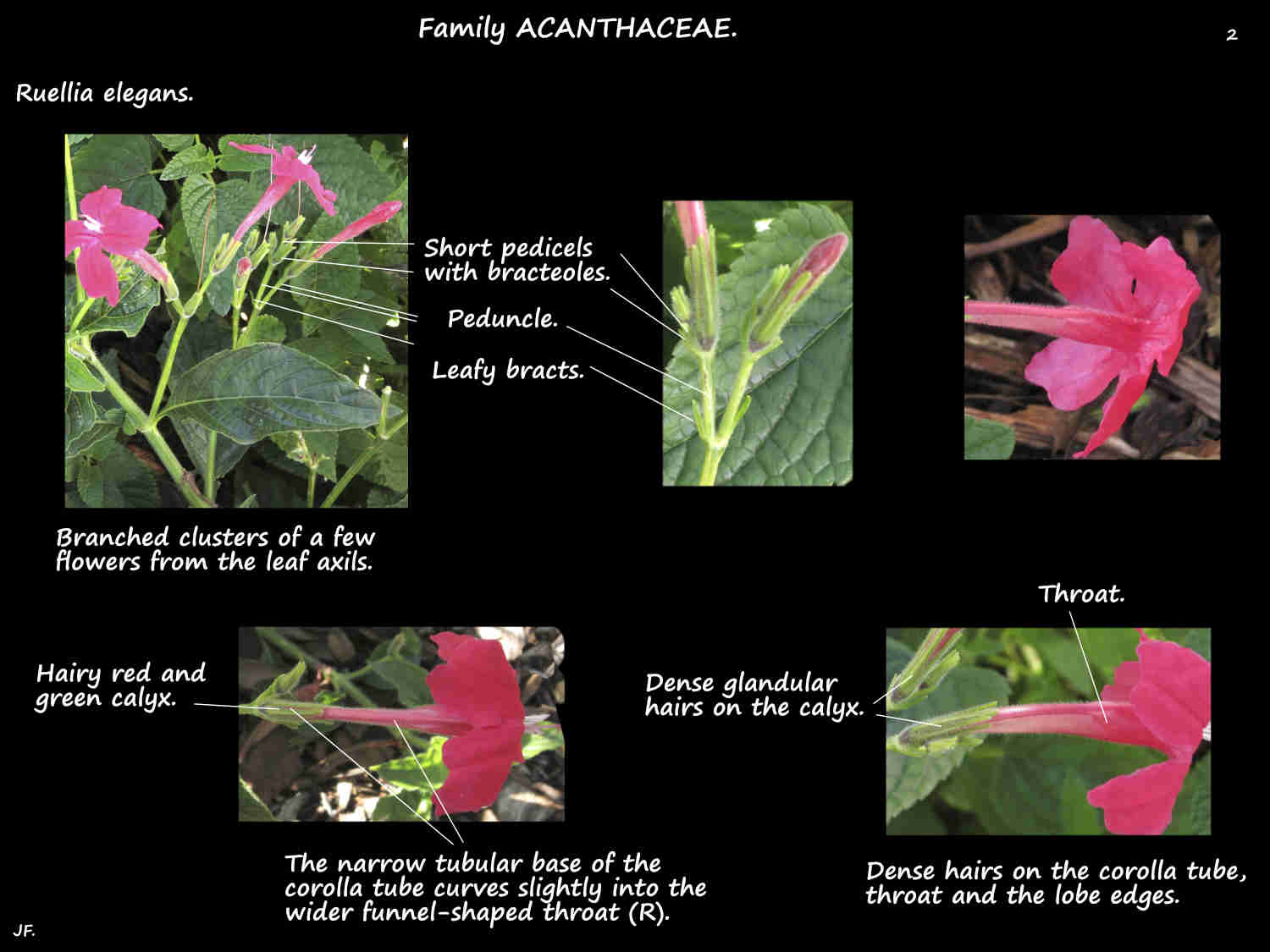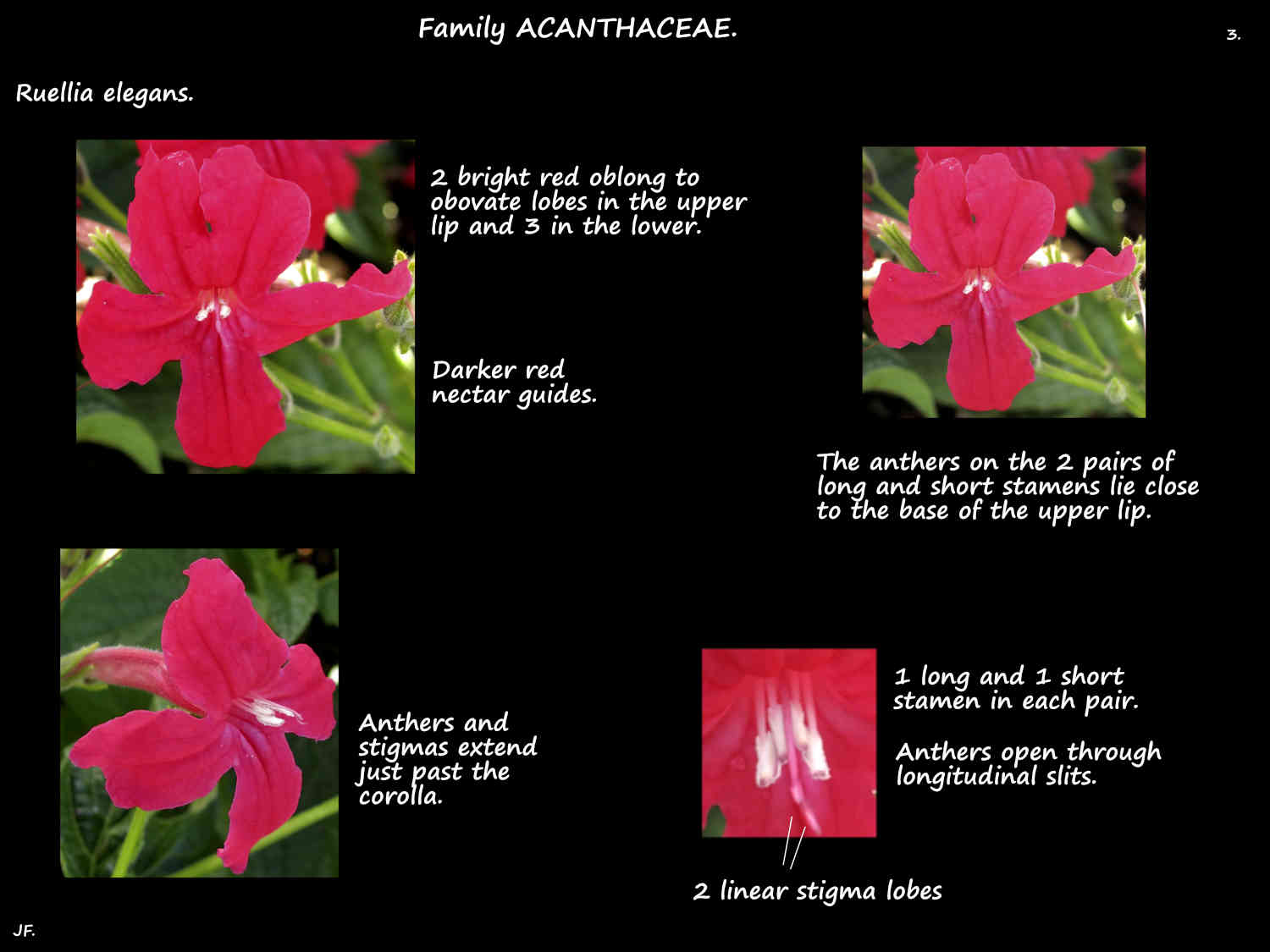Ruellia elegans.
Brazilian Petunia, Wild Petunia or Red Ruellia is native to Brazil.
The annual mounding sub-shrub is 30 (60) cm high and 60 (90) cm wide.
The green 4-angled stems become red where exposed to the sun.
Stems have stiff, sharp hairs that lie close to the surface and glandular hairs.
The leaves are opposite and decussate (in 4 ranks).
The petiole is 5 mm to 5 cm long with scattered glands and short stiff hairs.
The up to 8 cm long blade is ovate, elliptic to lance-shaped with a pointed tip and a toothed edge.
The base is heart or wedge-shaped and it may run down the petiole.
Young leaves may be whitish due to the dense simple and glandular hairs.
Older leaves have short stiff hairs that lie close to the surface and some glandular hairs.
These are sparse on the upper surface and mainly on the veins on the lower surface.
Axillary inflorescences are cymes with up to 10 flowers.
Cymes have the terminal flower on the midrib and each branch opening before any lower ones.
The side branches have around 3 flowers that are on 1 to 4.5 cm long pedicels with glandular hairs.
There are narrow green leafy bracts at the base of the peduncle/s and similar bracteoles around 3 mm long at the base of the pedicels.
All these parts have hairs similar to those on the leaves.
The 1.5 cm long calyx has a short reddish tubular base with 5 much longer narrow lobes.
The outer surface has dense simple and glandular hairs.
The bright red to reddish-orange corolla is up to around 6 cm long and almost as wide at the top.
The bases of the petals are fused into a narrow tubular section which curves slightly into a wider funnel-shaped throat.
The 5 spreading oblong to obovate lobes, 1.5 cm long and 1 cm wide are in 2 lips.
The 2 lobes in the upper lip are typically erect and the 3 in the lower tend to curve back.
There are simple hairs and glands with or without a stalk on the outer surface of the base and throat sections and short hairs on the lobe edges.
The 4 stamens are in 2 pairs with each pair having one long and 1 short one (4.3 and 4 mm respectively).
The filaments insert onto the lower part of the throat.
The anthers, lying close to the base of the upper lip extend just past it.
The superior 2 mm long ovary has 2 locules with 4 ovules in each.
The 2 cm long style, with some hairs holds the 2 linear stigma lobes between the anthers.
The lobes are of unequal lengths with the longer 2 mm and the other only 0.5 mm.
The fruit are an elliptical capsule up to 1.5 cm long.
Mature seeds are ejected by the retinacula (jaculators).
The up to 8 flattened seeds have water absorbing hairs and glands on the surface.
J.F.





